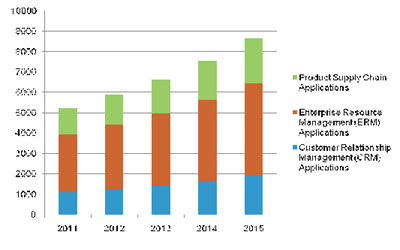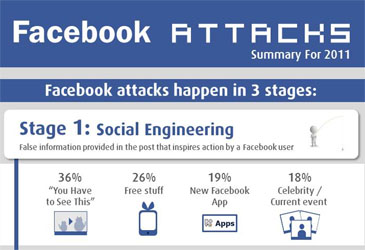Will SaaS Disappear in the Cloud?
During the past two years, the significant industry buzz surrounding software as a service (SaaS) and other off-premises models has shifted to cloud computing. Cloud computing is a broad concept, of which SaaS is only one variation, representing the application layer of the overall cloud architectural stack, according to market research company Gartner.
However, it says, SaaS has been a lead indicator of the cloud concept for some time. Gartner estimates that 75 percent of current SaaS delivery, as measured by revenue, could be regarded as cloud services, and this could exceed 90 percent by 2015 as the SaaS model matures and converges with cloud service models.
While Gartner estimates are optimistic, other market findings reveal that cloud picture is still cloudy. In 2010, according to another survey, 51 per cent of CIOs were considering using cloud computing. In 2011, there is still a mixed picture of use.
Despite the much cited benefits, 8 per cent of organizations that have considered cloud have discounted it for their organization and only 22 per cent of CIOs are exploiting cloud for core business processes. CIOs are still resolving where cloud can and cannot add value as part of their business model. (Read: CIOs – Chief Information (or Ignorant) Officers?)
Meanwhile, it is believed that the role of CIOs is changing rapidly as more businesses are adopting latest digital business models. So, the current focus is on overall digital technology adoption rather than on cloud exploration.
[ Also Read: Ali Shadman Reveals the Secrets of Cloud Computing ]With the theme “Beyond the Crossroads: How will the CIO role evolve in the digital business world?” the 8th Annual MIT Sloan CIO Symposium attracted CIOs, CTOs, and senior technology executives from around the world.
Among other topics of current interest, the show allowed a discussion on the evolving CIO role in the emerging cloud computing and mobile communication environments. (Read: Are CIOs Ready to Live in the Digital Business World?)
Gartner says worldwide SaaS revenue is forecast to reach $12.1 billion in 2011, a 20.7 percent increase from 2010 revenue of $10 billion. The SaaS-based delivery will experience healthy growth through 2015, when worldwide revenue is projected to reach $21.3 billion.
Gartner defines SaaS as software that is owned, delivered and managed remotely by one or more providers. The provider delivers an application based on a single set of common code and data definitions, which is consumed in a one-to-many model by all contracted customers anytime on a pay-for-use basis, or as a subscription based on use metrics.
[ Also Read: How to Store More on Mobile Phones and Cloud ]“After more than a decade of use, adoption of SaaS continues to grow and evolve within the enterprise application markets,” said Tom Eid, research vice president at Gartner. “This is occurring as tighter capital budgets demand leaner alternatives, popularity and familiarity with the model increases, and interest in platform as a service (PaaS) and cloud computing grows.”
Customer relationship management (CRM) continues to be the largest market for SaaS. SaaS revenue within the CRM market is forecast to reach $3.8 billion in 2011, up from $3.2 billion in 2010. Gartner expects SaaS to represent nearly 32 percent of the CRM market’s total software revenue in 2011.
[ Also Read: Microsoft Launches Office 365 Cloud Service ]SaaS revenue within the content, communications and collaboration (CCC) market is on pace to surpass $3.3 billion in 2011, up from $2.8 billion in 2010. The CCC market continues to show the widest disparity of SaaS revenue generation, with SaaS representing just 5 percent of enterprise content management (ECM) in 2010 but approximately 83 percent of Web conferencing.
The proportion of enterprise resource planning (ERP) revenue attributed to SaaS overall is still in the single digits, at approximately 7 percent of the overall ERP market. ERP SaaS offerings contributed approximately $1.5 billion to the SaaS market in 2010, and by year-end 2011, Gartner expects this to increase to $1.7 billion.
The penetration of SaaS within ERP varies greatly between subsegments, with human capital management (HCM) being the most penetrated (in terms of adoptions and revenue growth) and enterprise asset management (EAM) and manufacturing being relatively unaffected by SaaS.
Photo courtesy: MIT Sloan CIO Symposium






